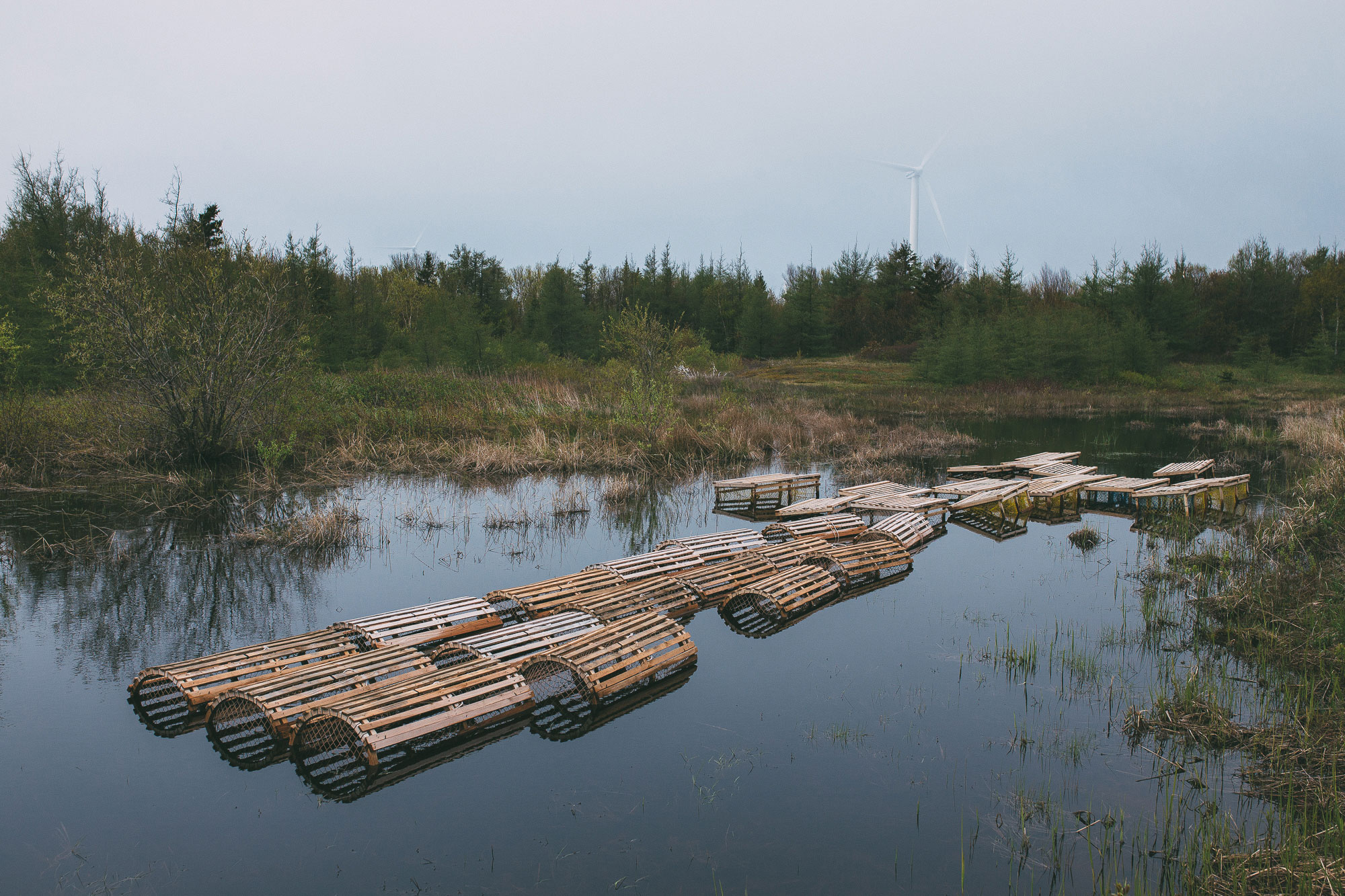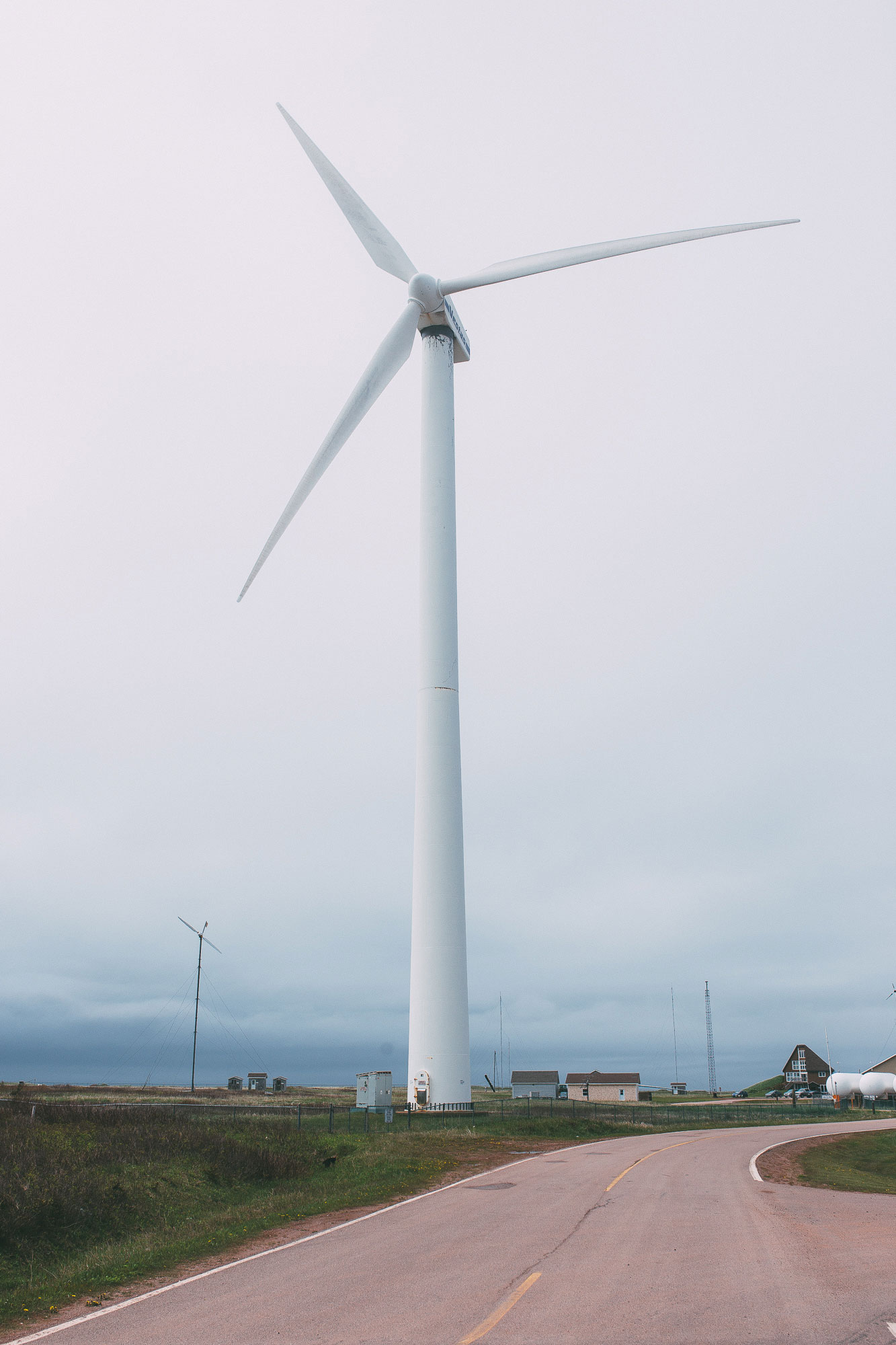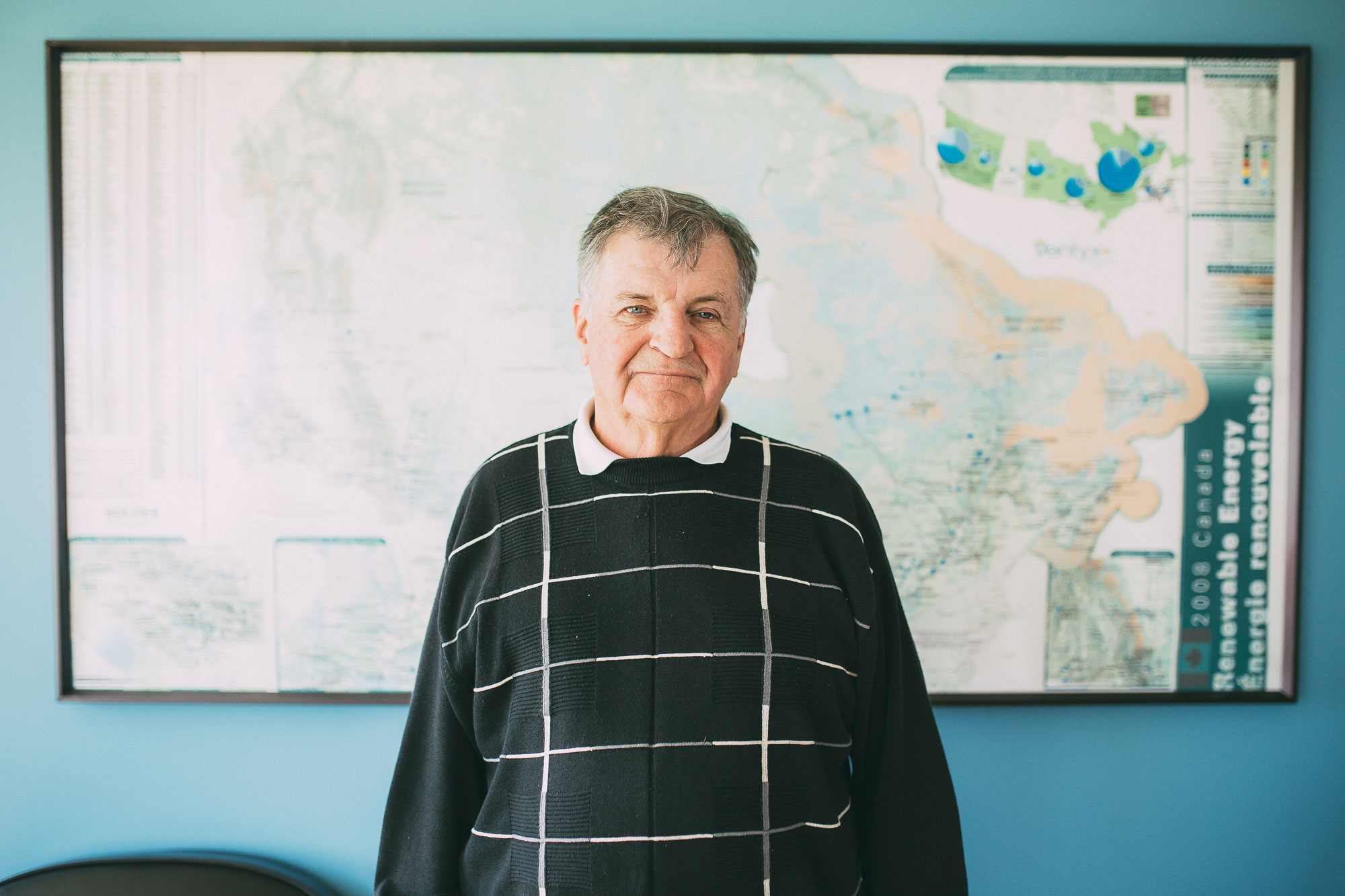As we bicycled to North Cape, the wind picked up behind us. What had previously been a relatively calm day on the inland highways of northwestern Prince Edward Island became a windy stretch of coastline. Not a strong wind by the standards of the Wind Energy Institute. But as the low clouds lifted and blew north, the wind turbines began to turn.


Ken is a retired engineer who spent the final years of his career at the Wind Energy Institute. He still works occasionally on various projects and met with us beside a large glass window behind which dozens of white wind turbines were slowly rotating.

The Wind Energy Institute of Canada (WEICan), originally called the Atlantic Wind Test Site, was founded in 1980 following the oil and energy crises of the 1970s. Its purpose was to test wind turbines, providing space and infrastructure to develop wind energy technology and formally certify output levels.
While I was looking up more about WEICan, I found an article that said the site’s capacity factor averaged 51%, among the best in Canada. Peaked at 69% last year. I’m not sure what that means exactly, but in general it means that it’s windy. Almost every day of the year. North Cape is exposed to the ocean on three sides.
Ken described the early days of development. “It almost seemed like it was backyard mechanics, I suppose, when it started. But it became companies that took ideas and developed them into sophisticated projects.”
The concept of harnessing wind energy has existed for as long as there’s been ships sailing on the seas. Or you could say as long as there’s been anemochory, seed dispersal on the wind. Wind turbines aren’t even that new themselves. But the transition to electricity-output generators happened in the last few decades. That’s where WEICan comes in.
“The challenge is how to harness that power in the wind effectively, and to do it economically, by building a unit that can operate efficently and stand up to the rigours of operating in a pretty harsh climate.”
“If you look at wind on a worldwide basis, there’s way more power in the wind than you could ever harness, or you would ever need. But we don’t have the facilities to do it, and it would be very difficult to control it.”
Ken was not a no-holds-barred renewable energy advocate, or a 22-year-old idealist. He was a pragmatic engineer, which meant that he talked clearly and honestly about the limitations of renewable energy sources.
“You don’t get constant wind,” he said simply. “If you look at the speed of the wind, it’s all over the place.”
The fluctuation of renewables like wind and solar make them inadequate to be the sole energy sources for our current utility systems. There’s a cycle of energy demand that changes predictably according to time of day and season, and there’s no way that atmospheric conditions can be relied on to match that demand. “You have to limit the amount of solar and wind and other renewables,” he explained, “because there’s days when the sun doesn’t shine, and the sun certainly doesn’t shine at night—and people still want power.”
That doesn’t mean that renewable energy, which he acknowledged is often driven by concerns related to climate change, doesn’t have a future. It just means it’s more complex than—if I may be tongue-in-cheek—Big Green organizations’ social media content. That’s not a surprise, but it’s certainly not easy to contend with. There’s a lot of moving, interconnected pieces to these issues, and they’re always changing.
An example of something that is changing is batteries. Large, efficient, cost-effective batteries could solve the issue of renewables’ unpredictable fluctuations. But they’re still in their infancy.
“The power you generate in times of excess, you could store in a battery. In the daytime, during peak periods of consumption, you'd be able to discharge your battery. The economics aren’t there to do it on a large scale, but if that could be perfected it would be quite an interesting development.”
Ken said there are companies all over the world working on batteries and it would be interesting to see where they went. Later on, he brought up batteries again, and it demonstrated to me the importance of out-of-the-box thinking and creative scientific process.
“Or homes,” he said. “If a utility could come up with a plan to say, you buy all the power at the off-peak hours say 1-3 in the morning, charge your batteries up and then get the power out of your batteries when you get up in the morning.”
I don’t know a lot about the grid, but from what I understand that would actually have pretty significant implications.
Of course it’s in the future, but so was a lot of what Ken talked about—and so was every single piece of equipment that is now an old and familiar sight at North Cape. The giant wind turbines that they once developed as state-of-the-art technologies are now relatively small and outdated. That’s not to say that WEICan is a relic of the past, but that these technologies are moving, and moving fast. That gives Ken a sense of purpose and a sense of hope.
“I imagine you can increase the percentage of energy being generated by renewable sources, but it’s going to reach a limit. It’ll reach a peak. Now if you could perfect storage, and there's a lot of effort going into that, then that will open up new horizons. That will evolve over time so I’m optimistic. It just keeps evolving.”
